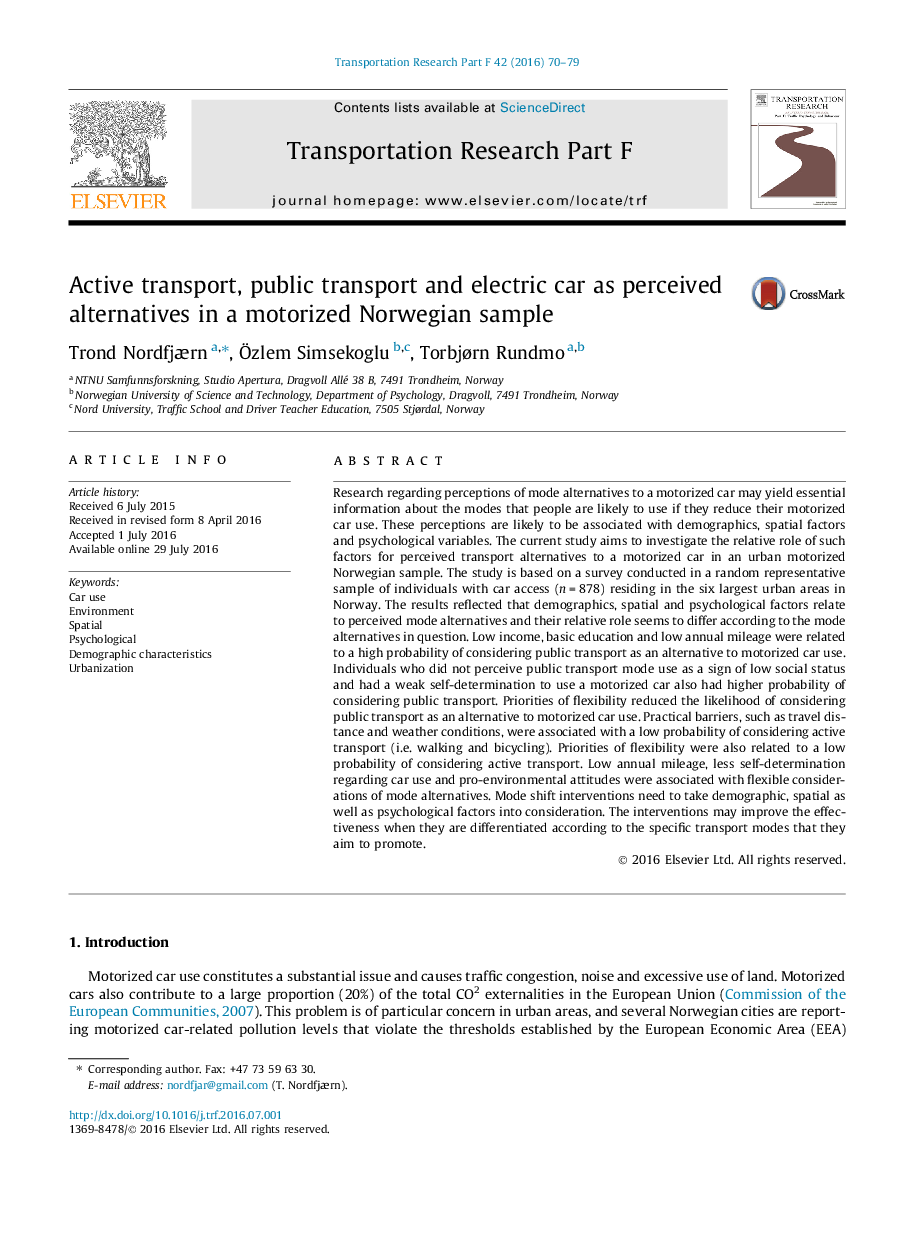| کد مقاله | کد نشریه | سال انتشار | مقاله انگلیسی | نسخه تمام متن |
|---|---|---|---|---|
| 5037358 | 1370218 | 2016 | 10 صفحه PDF | دانلود رایگان |
- Factors were examined in relation to perceived mode alternatives among car users.
- Demographics, spatial and psychological factors were related to these perceptions.
- Low income, education and mileage were related to considering public transport.
- Practical barriers were related to a low probability of considering active transport.
- Interventions could target demographic, spatial and psychological factors.
Research regarding perceptions of mode alternatives to a motorized car may yield essential information about the modes that people are likely to use if they reduce their motorized car use. These perceptions are likely to be associated with demographics, spatial factors and psychological variables. The current study aims to investigate the relative role of such factors for perceived transport alternatives to a motorized car in an urban motorized Norwegian sample. The study is based on a survey conducted in a random representative sample of individuals with car access (n = 878) residing in the six largest urban areas in Norway. The results reflected that demographics, spatial and psychological factors relate to perceived mode alternatives and their relative role seems to differ according to the mode alternatives in question. Low income, basic education and low annual mileage were related to a high probability of considering public transport as an alternative to motorized car use. Individuals who did not perceive public transport mode use as a sign of low social status and had a weak self-determination to use a motorized car also had higher probability of considering public transport. Priorities of flexibility reduced the likelihood of considering public transport as an alternative to motorized car use. Practical barriers, such as travel distance and weather conditions, were associated with a low probability of considering active transport (i.e. walking and bicycling). Priorities of flexibility were also related to a low probability of considering active transport. Low annual mileage, less self-determination regarding car use and pro-environmental attitudes were associated with flexible considerations of mode alternatives. Mode shift interventions need to take demographic, spatial as well as psychological factors into consideration. The interventions may improve the effectiveness when they are differentiated according to the specific transport modes that they aim to promote.
Journal: Transportation Research Part F: Traffic Psychology and Behaviour - Volume 42, Part 1, October 2016, Pages 70-79
